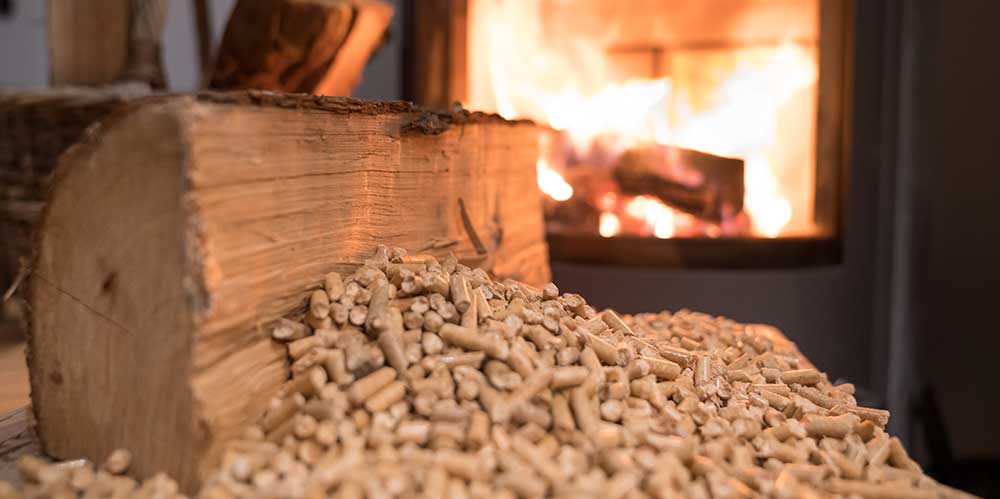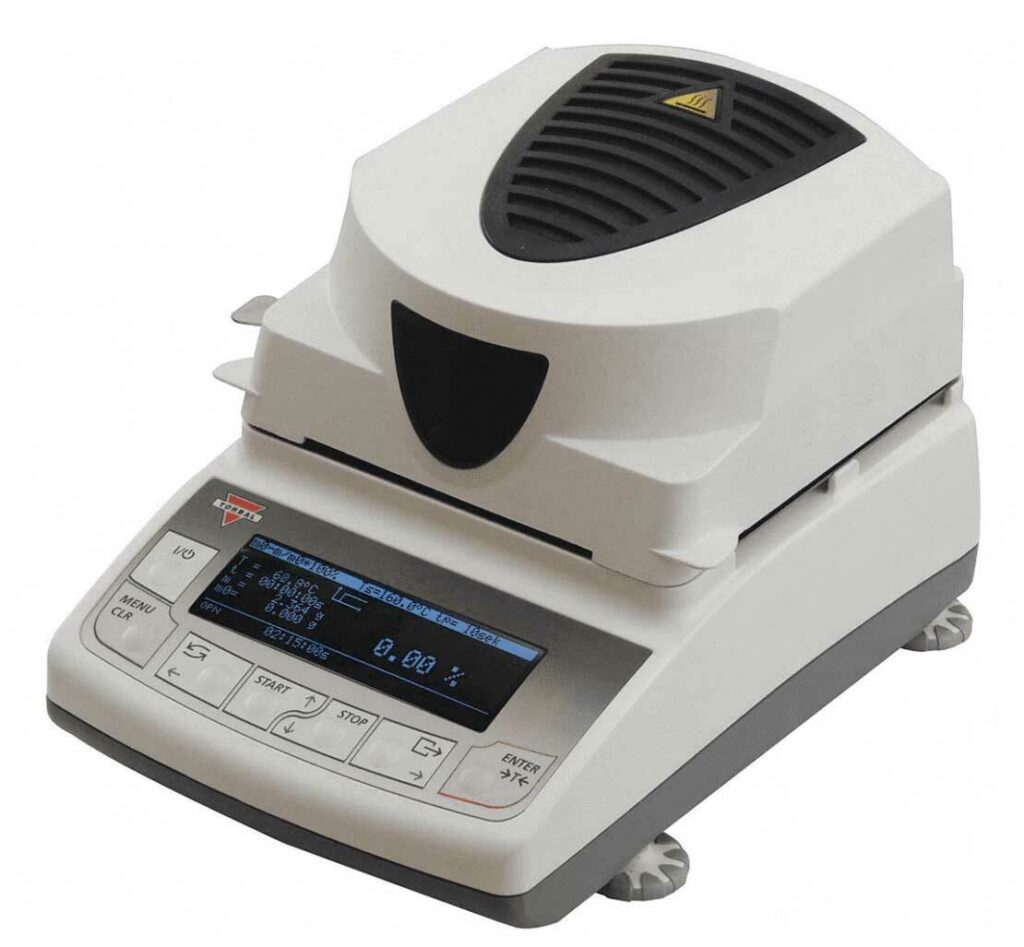
How Moisture Analyzers Ensure Efficient and Clean Burning Wood Pellets
Wood pellets have surged in popularity as a sustainable and efficient heating solution for homes and businesses. To ensure optimal performance and meet industry standards, precise moisture control is crucial. A compact moisture analyzer provides a reliable method for spot-checking moisture content throughout the wood pellet manufacturing process. This post provides an overview on using a moisture analyzer for wood pellet quality control.

Understanding Wood Pellet Quality Standards
The Pellet Fuel Institute (PFI) has established “Standard Specification for Residential/Commercial Densified Fuel,” outlining recommended moisture content for various pellet grades. This standard provides a benchmark for manufacturers and consumers alike, ensuring consistent quality and performance.
The Wood Pellet Manufacturing Cycle and Moisture Control
The journey from raw material to finished wood pellet involves several critical stages, each requiring meticulous moisture management:
- Raw Material Processing:
- Wood pellets originate from diverse sources, including hardwood, softwood sawdust, chips, and waste materials from furniture and flooring manufacturing.
- The raw material is processed to achieve a uniform size with a moisture content of approximately 13% to 16% before pelletizing.
- Pelletizing:
- Pelletizing occurs under high temperatures (around 200°F) and pressure (approximately 45,000 psi).
- The lignin in the wood acts as a natural binder, eliminating the need for additives.
- Drying:
- Drying kilns are used to reduce the moisture content of the green pellet stock.
- Commercial-sized moisture readers are positioned along the drying lines for real-time monitoring.
- Laboratory-grade moisture analyzers, such as the Torbal ATS 60, are used to confirm moisture content through random sampling at the end of the drying line and before bagging.
ASTM E-871 and PFI Standards
ASTM E-871 serves as the guide for moisture content determination, as referenced in the PFI standard. The standard specifies the following moisture content levels for finished pellets:
- Premium Pellets: ≤ 8%
- Standard Grade Pellets: ≤ 10%
While the difference may seem small, lower moisture content translates to:
- More usable fuel per bag (less water).
- More efficient combustion (less energy wasted burning off moisture).
For comparison, cordwood used in fireplaces can have a moisture content ranging from 20% to 60%.
Using a Moisture Analyzer for Wood Pellet Quality Control
The compact Torbal ATS 60, utilizing the thermogravimetric process (loss on drying), is ideal for spot-checking wood pellet moisture content:
- Sample Preparation:
- Distribute random samples of finished wood pellets evenly on the sample plate, ensuring they are not piled on top of each other.
- Place the sample plate on the analytical balance and use the tare function to record the net weight.
- Setting Operating Criteria:
- Use the keypad to program the desired operating parameters.
- Close the cover to initiate the drying process.
- Drying Process:
- The halogen heater will drive off moisture until the dry weight stabilizes or a pre-set time is reached.
- Data Analysis:
- The difference in weight represents the moisture content of the sample.
- Data can be viewed on the unit’s display and transferred to a printer or PC via an RS-232 interface for record-keeping.
Benefits of Moisture Control in Wood Pellet Production
- Consistent Quality: Ensures pellets meet PFI standards and customer expectations.
- Efficient Combustion: Lower moisture content leads to cleaner and more efficient burning.
- Reduced Emissions: Drier pellets produce fewer emissions.
- Increased Customer Satisfaction: Consistent quality and performance enhance customer loyalty.
- Reduced Transportation costs: less water weight.
General Moisture Analyzer Applications and Best Practices
Versatile moisture analyzers are used across various industries to verify moisture content specifications. As with all precision instruments, adherence to established procedures is essential.
- Operational Manuals: Follow the guidelines outlined in your company’s operational manual.
- Calibration: Perform initial and periodic recalibration to maintain weighing accuracy.
- Employee Training: Implement comprehensive employee training programs to ensure proper use and maintenance of moisture analyzers.
Enhancing Your Wood Pellet Quality Control Process with Moisture Analysis
By incorporating moisture analyzers into your quality control process, you can ensure your wood pellets meet the highest standards for performance and sustainability. For expert guidance on selecting and using moisture analyzers, call or chat with the experts at Tovatech.
